I have heard many times that we Mexicans are resilient people mostly because of the tough times we have been through: economic crises, earthquakes, hurricanes, to name a few. Events that usually bring out our strength to get up the next morning and deal with whatever else comes. We even adopted Dolores Huerta’s original slogan, “sí se puede” whenever the national soccer team played in the World Cup to keep us hopeful and carry over to daily life to help us overcome the obstacles of any given day. In the more than ten years of living in the US, I saw that resilience in my fellow Mexicans and Latinos in general, constantly adapting to the circumstances no matter how hard, always with the idea of getting up the next day and making it better.
In the last decade, Mexico has seen escalating violence due to the ongoing drug wars, increased poverty, systemic corruption, et al. This violence pushes more people to migrate to other cities within Mexico and abroad. Those who are not able to leave their homes, are left with the risks and forced to figure out their own survival in which living an honest life might not be the safest choice.
The state of Guerrero, located along the Pacific Coast, is no stranger to violence and tragedy. In the 1960’s the population lived through a war of an authoritarian government against leftist and civil groups who challenged the status quo in the area. A vast and fertile region known as La Montaña became an ideal place for drug production and trafficking. Fast forward to the current decade, Guerrero has ranked as the most violent state in Mexico with the highest rate of murders and other crimes. The still unsolved disappearance of 43 students from Ayotzinapa in 2014 showed Mexicans and the world the extent of violence in the region.
Addressing the situation in Guerrero became a priority for the government, but there has been little time to develop economic opportunities for those who were not able to escape the region, increasing the uncertainty and insecurity for much of its population. “Yes, we can” became more of a question than a statement of hope.
A story of their own
Mezcal has a long tradition in Guerrero and Don Ciro, Don Refugio, Don Antonio and Don Tomás and have been making mezcal for more than 40 years in Chilapa, one of the main municipalities located in the low mountain region of Guerrero. Until last year, they were members of Sanzekan Tenmi, a collective of producers in Guerrero that was created in 1990. Recently the four producers decided to start their own project based on the same principles as Sanzekan where every member and partner would be treated equally and earn a fair income. Thus was born Aguerrido.
The name Aguerrido means fierce or courageous which is simply how the founders see themselves: as brave people able to adapt to life’s events, because they believe in who they are and what they do. I recently had the opportunity to interview them over several days as they had to commute from their towns to Chilapa to take the call. In these conversations, there was so much entrepreneurial energy as they spoke with excitement and hope, even in the midst of the pandemic.
I first spoke with Erika Meneses, Marketing Director of Aguerrido Mezcal. She is also a former employee of Sanzekan and is helping the maestros with everything from sales, social media, and marketing. Her confidence is reflected in her words “Our plans were to launch in 2021 but once the pandemic started, we thought we’d just to go for it,” she explained. However, they realized they needed money for branding, marketing, and logistics. “We had to learn new abilities like selling online and overcome the lack of industry events to attend and promote the brand in person,” she continued. “We had not planned to pack and ship every time we made a sale. The lack of industry events to promote our product is our main obstacle, but we are willing to try and do some virtual events. It seems like the pandemic is here to stay, even with a vaccine, so we’ll have to learn to live with it.”
Fortunately, they had batches of mezcal rested in glass from 2010, 2017 and 2018, and they began selling directly to a close network of friends and family in their region and in CDMX. They raised some funds by selling wholesale or a granel, and were supported by the owner of La Capitana, a mezcaleria in Estado de Mexico who helped them develop their logo and label. Currently, they are categorized as a Destilado de Agave, though are considering becoming certified by the CRM because some friends have recommended going that direction. However they are still not sure of adapting their ways to pass the tests, like using distilled water to lower their ABV.
In the meantime, it is available by pre order within Mexico and a good selection of rested and joven of each maestro will be soon available in the US through the brand Mezcal Mal Bien.
The Aguerrido expressions One of the fabricas for Aguerrido
Meet the maestros
Mezcal season in Guerrero begins in February and goes until mid-June when the rain signals it is time to take care of their milpa. The four producers live in different areas near Chilapa and produce mezcal in a similar manner. They also share values when it comes to how to manage their environment and manage agave. Their mezcals are double distilled in copper stills, using the heart and tails to reduce the alcoholic content to somewhere between 48 and 52 ABV. They roast the agave in conic ovens using Encino oak and a gas-powered mill to turn the agaves into bagazo. The fermentation takes place in wooden vats, Don Tomas explaining “they say you have to use the best wood quality available, so they provide a good flavor to the mezcal, we use ayacahuite (Mexican white pine).”
Agave Cupreata, also known as maguey papalote, is endemic to the region. They harvest both wild and semi-cultivated. Some of the mezcaleros only use Cupreata, others also use a little bit of Espadín and Zacatoro when it is available. They are not new to reforestation, and each shared stories of collecting seeds during their childhood, a way for their parents to introduce them to the world of mezcal. This natural awareness for preserving their land is the reason for developing a short-term project in which every mezcalero shares seeds and hijuelos with the partners so that one day they will be completely self-sufficient in growing their own agaves.
Another practice they have in common is the usage of ripe agave or “tierno” only. The rule is to cut only the maguey with the velilla cerrada, which indicates its ripeness. The term velilla is used by Guerrero producers to name the thinning of the central leaves before the calehual or quiote begins to grow. If the velilla is closed, it means they are still green or tiernos, not ready. If they get to find capon, they will use it and if there is enough for one roast, they will surely use them too. “We always use ripe agave and capon when available, if there is enough capon for one roast, we make a sole batch of it.” explained Javier Barranca, Don Ciro’s grandson.
Don Antonio Sonido
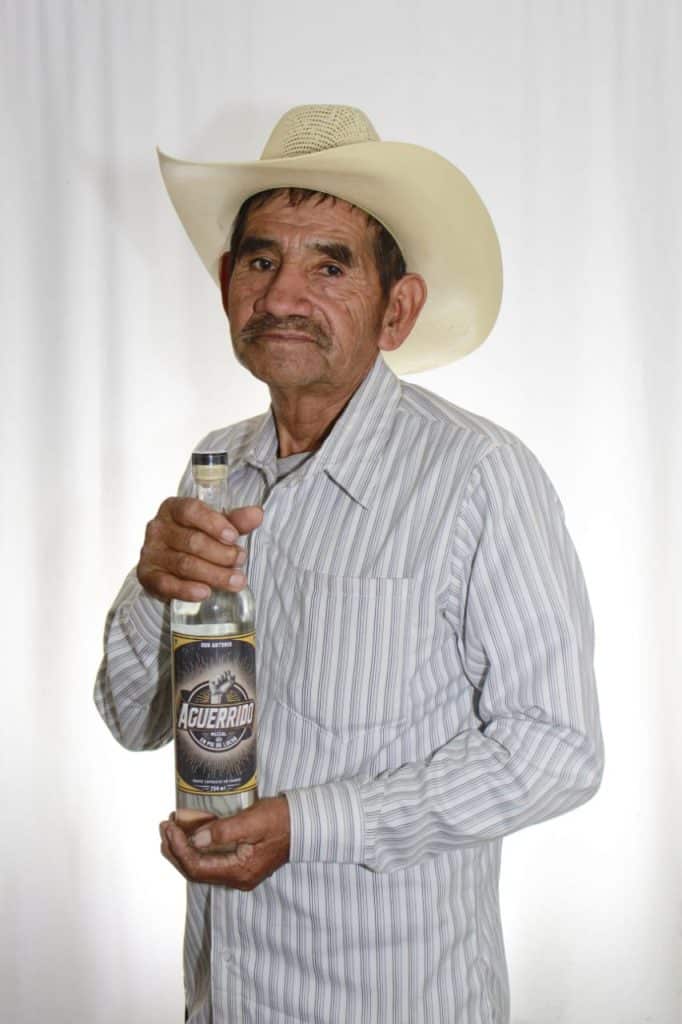
Don Antonio is from Pantitlán, a town located in the low mountain region of Guerrero. Don Antonio began making mezcal about forty six years ago. His family owned a land with a vast number of wild maguey so he began working for a maestro mezcalero who taught him the craft, from cutting the piñas to cooking and distilling. For most of the time, he worked as a mediero and it was only nine years ago he was able to get his own factory or fábrica and employ his family. Together with his siblings, they own 3 hectares where they grow Cupreata and Espadin. According to Doña Erika, the agave growing here is not that common in the surroundings of Chilapa because it likes the warmer weather found in Ahuecotzingo, another village in the area. He has also cultivated Blue Agave and will have a few cabezas ready this season, “I’ve tasted that mezcal and I like the flavor,” said Don Antonio.
He is 76 years old and he is involved in every step of the production cycle. Before every roast or hornada, he cleans up the conic oven so it is ready right before they get all the maguey and firewood to start the oven. Fermentation at the beginning of the season takes longer, up to 8 or 12 days depending on the weather
Each year, Don Antonio makes a pechuga using lamb breast with seasonal fruits and spices. This is a double distilled pechuga and the loss of almost half the the first distillation of 400 liters is more than made up for in the unique flavors of the end result.
Don Refugio Calzada
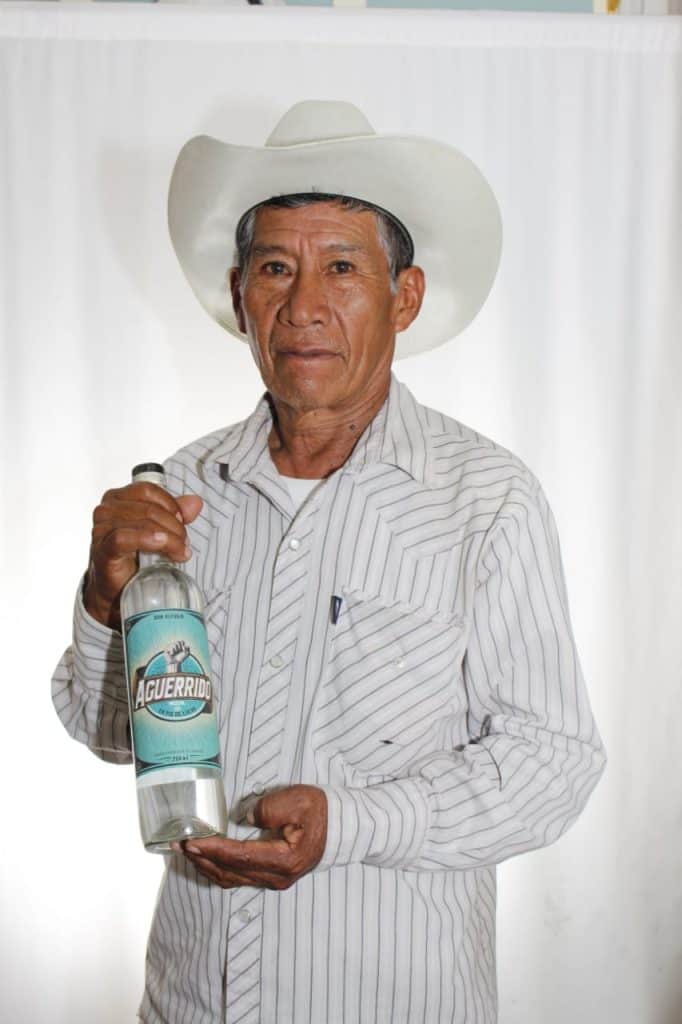
“I was afraid of being around magueyes when I was a kid, I didn’t like the idea of getting the caldito del maguey encima,” said Don Refugio remembering his childhood when his abuelos pushed him and his siblings out to the country to learn everything about the agaves and its ecosystem. They would always complain of the rash caused by the sap or quequesque from the freshly cut leaves. I asked if he wore long sleeves for protection but the abuelos would not allow it because they wanted the children to become used to it.
Don Refugio’s parents passed away when he was a child, so he learned the craft from his uncles who had learned from their parents, his abuelos. He began by collecting seeds when he was 14 years old. He is now 67 years old and owns 25 hectares of land where he grows Cupreata and just began cultivating seeds of Zacatoro, a wild angustifolia from Guerrero. Three of his four sons help him at the fábrica cutting, cooking, and distilling agave. He also takes care of the surrounding forest, making sure all trees are well trimmed so that sunlight travels well through the branches allowing new trees to grow, explaining “the reforestation of the mountain is a natural process”.
For special occasions he makes two different pechugas, one using chicken breast, almonds, raisins, and spice and a bunch of insects known as chumilin. “I follow the family tradition and make mezcal with chumilin, it’s so flavorful.” Don Refugio collects the chumilin or jumiles, a small insect similar to stink bugs whose season goes from December to April. Known as “xotlimilli” in nahuatl, these insects have their own celebration, the Chumilin Festival which takes place right after Day of the Death. There is also a slightly bigger variety common in the state of Morelos, which I have personally tried, they can be cooked into a salsa or eaten alive. Because they eat oak leaves, they have a cinnamon-y kind of taste.
When he began making mezcal, agaves were abundant so his family would source wild maguey all the time. As years passed and agaves became scarce, he started collecting seeds and continues doing this 20 years later. Their rule is to give back what you take, for example, if in one season he cuts 2,000 agaves, he will have to plant back at least 3,000 to compensate for the loss.
Don Ciro Barranca
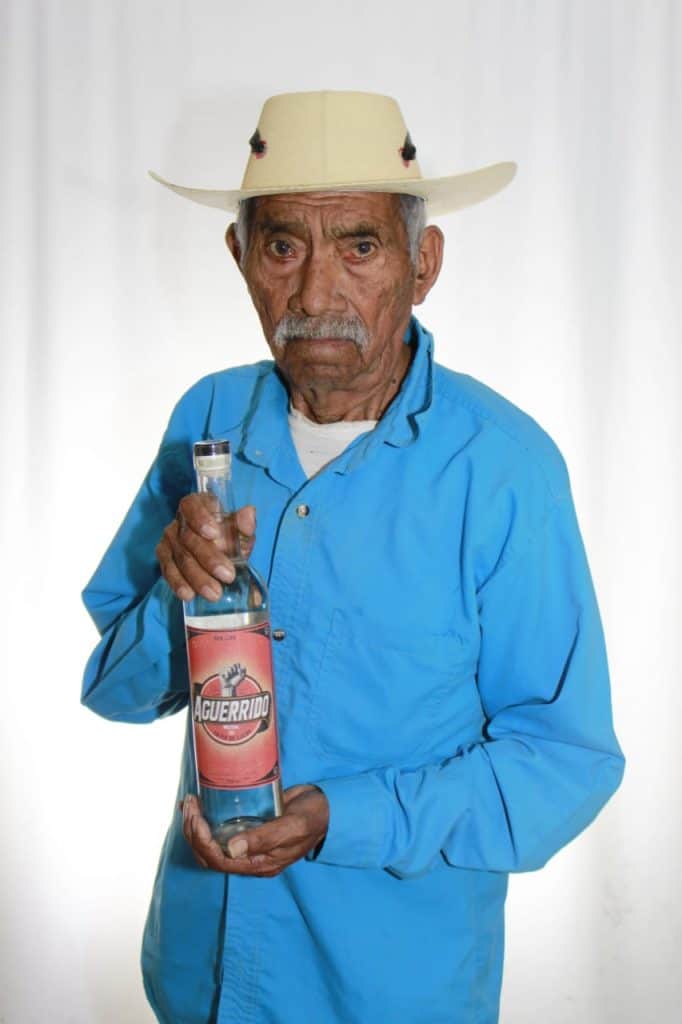
Close to Pantitlan, there is a town called Ahuacuotzintla also part of the low mountain region, with a population of about 2,700 people, this where you can find Don Ciro. His father used to carry maguey from the mountain to the fábricas and 13-year-old Ciro would help him fill up the baskets. As time went by, he realized how he enjoyed these tasks, so he began learning more, always working between the fields of maguey and the vegetable crops. His uncles were medieros from whom he learned more about cooking and distilling mezcal.
When his uncles were first distilling they used steel containers because it was practical, they were easier to transport and to hide from the government who would come to charge them a “cuota” or destroy their production. Steel containers were also easier to replace. Twenty-five years ago, they changed to copper stills. Don Ciro has been working at his own fábrica for the past twenty years.
“You need to take care of the process so you can get a good mezcal, uno sabroso,” said Don Ciro who is now eighty-six years old, but his health doesn’t allow him to work anymore. His son was in charge of his fábrica but he died so it is now his grandsons who make mezcal under his guidance. “I don’t drink mezcal anymore because it makes me feel dizzy too fast, I just try it when it comes out of the still.” I asked how he can verify if the mezcal is good if he is not drinking it. “I can tell by the way my grandsons work,” explained Don Ciro.
He and his grandson, Javier, only grow maguey Cupreata and use Zacatoro whenever it is available. For a regular roast, they use about 500 magueyes or cabezas as they call them. A production cycle takes 25 to 30 days, from the agave harvest to distillation. They can do six or seven roasts of 600 liters each during the season. For Javier, Zacatoro is sweeter than papalote, and explained “Zacatoro has more ixtle or fiber so it becomes harder to shave but its heart is softer so it’s easier to break it down. It’s more expensive because we use double the agave to fill up a one roast, that’s why a lot of producers don’t like to use it.”
Don Tomas Gutiérrez

How many of us can easily identify the flavors of the mezcal we drink? Not an easy task which is why we use tasting notes. I can’t help but wonder how they would describe their mezcal. I have often noticed that with producers they know when something is good and that is it. I asked Don Tomás, an 85-year-old maestro with a fabrica located in Tepehuixco. “You need to savor your mezcal to feel if it is sweet or if it has a good flavor,” he explained. “To make a good mezcal, it needs to be rested in glass and after one or two years, the flavors change, they settle, and it gets smoother. I have kept batches for up to eight or ten years. It makes a difference.” And when he talks about other producers, “I am not sure why ours has good fame, it must be the care we take in choosing a good maguey. Others taste different, it depends on the water you use, where the maguey comes from, where it was grown, if it is overcooked or over fermented.”
For every question I asked, he put special emphasis on the tradition he inherited as he always tries to follow the guidelines he was taught. In 1965, Don Tomás began learning from his father who used to mash the magueys by hand with a mallet. He started leading the donkeys carrying firewood and maguey back to the fabrica. Today, he has a vivero, or greenhouse with more than 50 to 60 thousand plants. Once they are ready, in about 14 months, they will be transferred to the mountain. He is currently growing 80 per cent Cupreata, 10 percent Zacatoro and 10 percent Espadín.
The apprentice

Doña Erika is also an aguerrida. Her husband Don Melquiades Tlacotempa suffered a stroke and passed in late 2019. Even though she has been living difficult times, she has not given up. On the contrary, she feels and sounds greatly confident of her skills and abilities from her 13 years at Sanzekan. Don Melquiades grew up in a family of medieros eventually becoming one himself. He also worked at Sanzekan as Manager overseeing the bottling process and quality control. Doña Erika and Don Melquiades worked together and attended trade events and one time in CDMX they tried an abocado made with maguey Arroqueño and lemongrass. They liked it so much they thought of sharing the idea in Guerrero and seeing if anyone would try to make their own version using agave Cupreata instead of the Arroqueño, but no one did. In May 2020, a few months after Don Melquiades death, Doña Erika decided she would make it as an homage to her beloved husband.
She is from Tempa, a small town with no mezcal factories but a lot of agave fields. She procured Cupreata maguey from a mediero and then asked Vicencio, one of Don Ciro’s grandsons, to help her make it. They added zacate limón or lemongrass on the second distillation. They only used the puntas to obtain 150lts at 60 ABV however many friends and mezcal connoisseurs recommended she do a lower ABV to appeal to a broader market. In June, she distilled once more, resulting in a new batch of 100 lts at 48 ABV, both batches are now almost gone.
Doña Erika does not want to only be in charge of the administrative work at Aguerrido. She dreams of becoming a maestra mezcalera and will continue learning the full process from the other maestros. In the meantime, she plans to produce more of the abocado, with the label Aguerrido under the name of Melquiades, her way of honoring the memory of her husband.
The next generation
Passing the mezcal torch to a new generation is important in order to continue the traditions passed down. Luckily, these maestros have continued to share their knowledge with the next family generation. “I started bringing my kids out to the country since they were 4 years old, they learned the hard work that’s why today they can handle it,” said Don Refugio. “This is a family business which you need to learn in your early days, if you like it you will keep it up. The idea is to lose the fear.” By hard work he talks about the whole package of living in a community like theirs. It not only includes making mezcal but also growing their own food, feeding, and keeping their animals in good shape, taking care of their forests so they have firewood and water always available.
In 2019, more than 22,600 Guerrerans were deported from U.S. Back home and dealing with poverty and the difficulties in making a living wage, many of them employed themselves as taxi or bus drivers and even sold popsicles in the street. This is a familiar pattern in most rural communities and there is always a story of the son who migrated. With the recent mezcal boom and the current political situation, many of them have came back voluntarily and have found new opportunities in their hometown.
That is Javier Barranca’s story, Don Ciro’s 35 years old grandson. Like many young men in Guerrero, he crossed the border to the US to find better opportunities but after five years, he returned to Guerrero and began working full time at the factory and has now been there for seven years. I lived abroad for more than ten years and I know it is hard to adjust when you come back, but Barranca said it was not. He used to watch his dad and Don Ciro working together so he is no stranger to the mezcal process. Don Ciro motivated him to continue the craft, and at the start of each season, they get more help from other uncles, siblings, cousins, however it is Barranca who is now in charge of the operation. Lorenzo is 44 years old and began working with his father Don Antonio about thirteen years ago. Don Antonio taught Lorenzo how to use only ripe agave, essential to making good mezcal, and they cut them during warmer season when the agaves have the most sugar reserves. Lorenzo spent ten years living in the US, working in construction, but he tired of that way of life and he returned to work full time at the fábrica. One of his siblings is still across the border, working on a temporary visa and the other two siblings live in Guerrero and work at other fábricas. As many other men do, once the mezcal season ends, he goes over to another town to work on the harvest of corn (Guerrero is one of the biggest producers of hybrid corn) and onions. If he could, he would dedicate his full time to making mezcal.

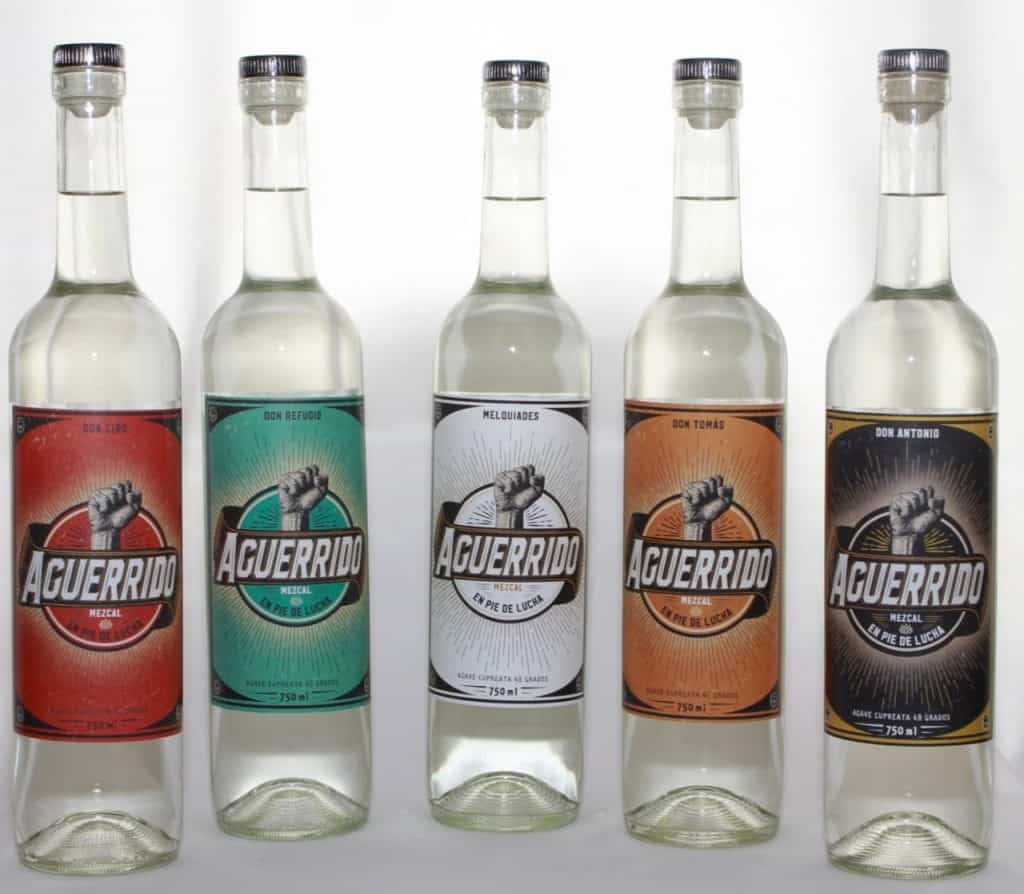
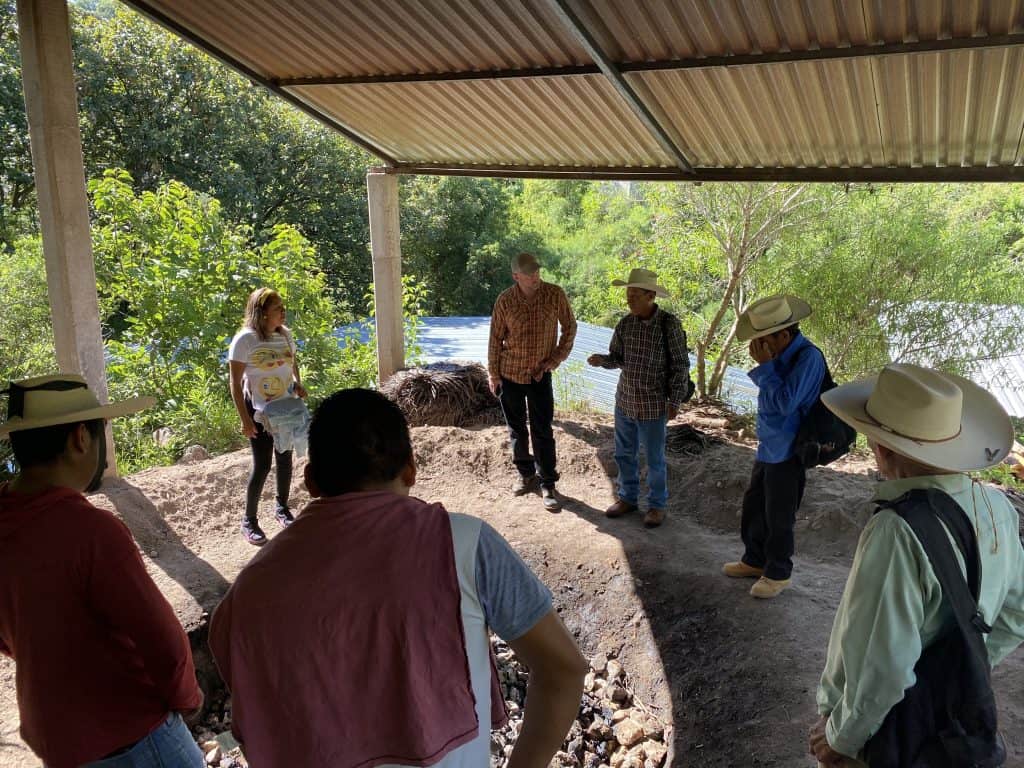
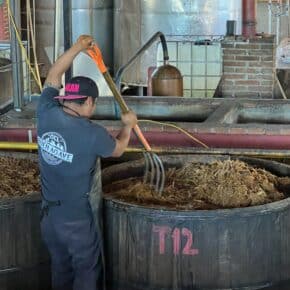
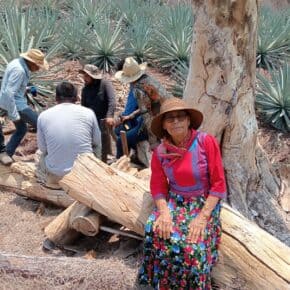
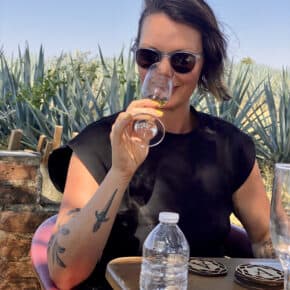









Leave a Comment